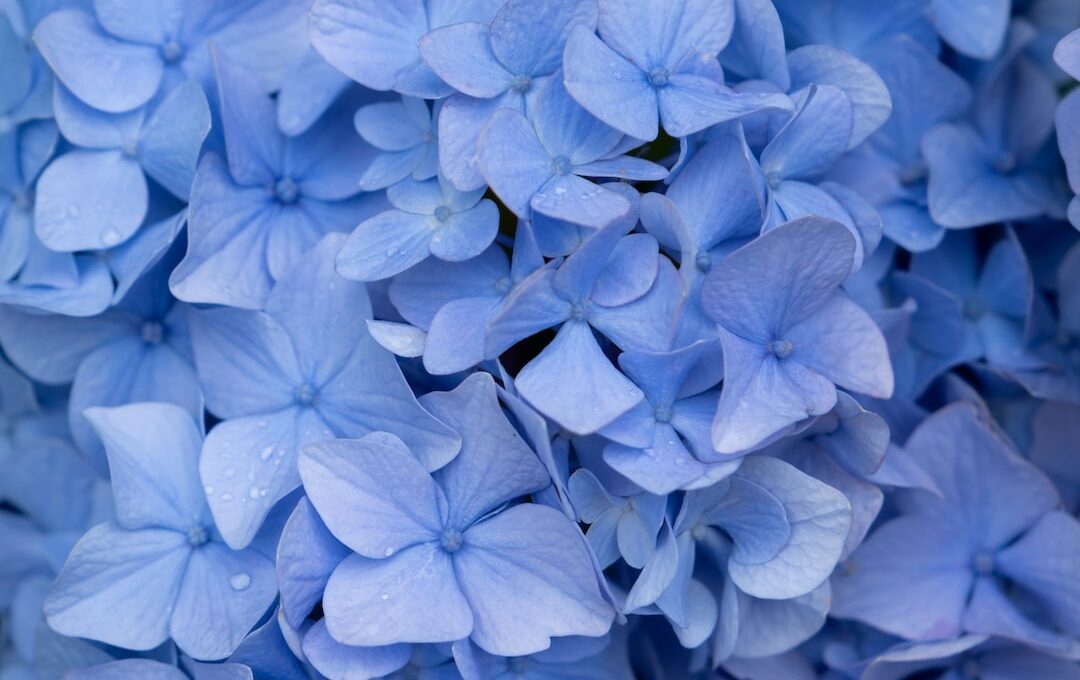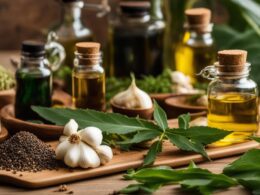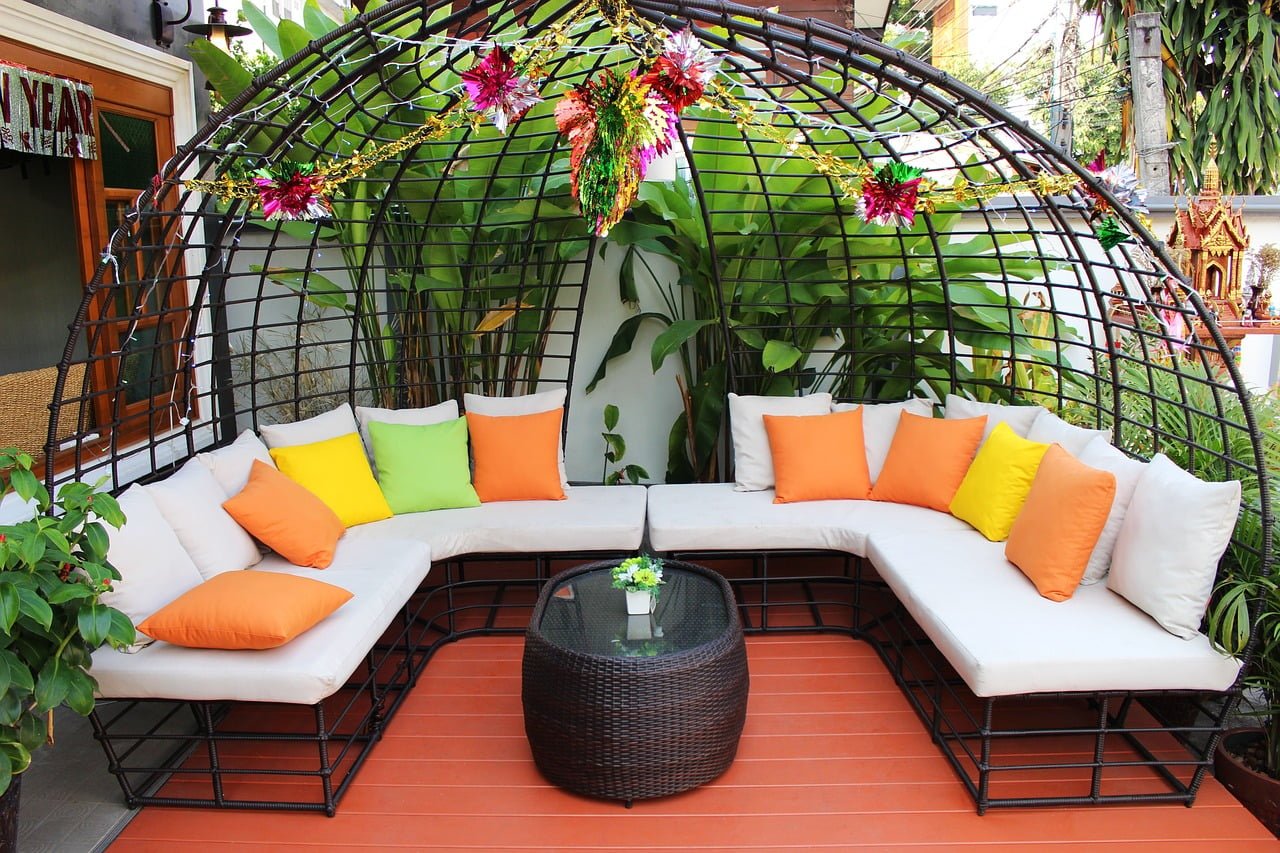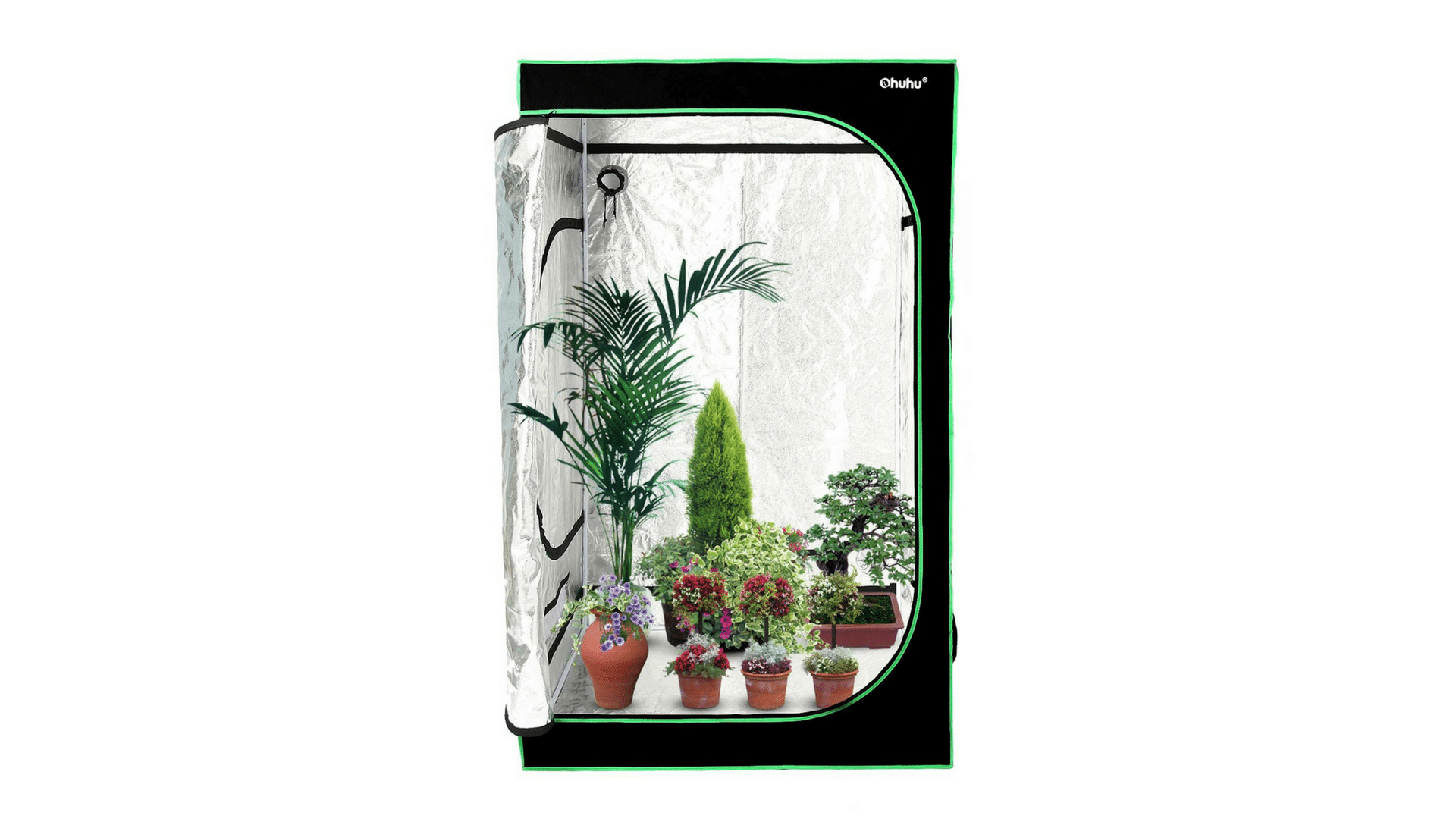Are you wondering how long your potted hydrangeas will last?
It’s important to understand the lifespan of these beautiful plants so that you can provide them with the proper care they need. In this article, we will explore the factors that affect the longevity of potted hydrangeas and provide you with tips on how to extend their lifespan.
By following the right care and maintenance techniques, you can enjoy the beauty of potted hydrangeas for years to come. We will also discuss common issues and diseases that affect these plants and how to identify signs that your hydrangeas are nearing the end of their lifespan.
Lastly, we will guide you on the proper disposal of potted hydrangeas. So, let’s dive in and ensure the safety and longevity of your potted hydrangeas!
Quick Summary
- Lifespan of potted hydrangeas can be extended with proper care and maintenance
- Factors affecting lifespan: pot size, sunlight, watering
- Regular fertilizing and pruning promote healthy growth and vibrant blooms
- Transferring to larger pot allows for more space and healthy root development
Understanding the Lifespan of Potted Hydrangeas
Curious about how long your potted hydrangeas will stick around? Let’s dive into understanding the lifespan of these vibrant beauties!
When it comes to potted hydrangeas, there are a few factors that can affect their blooming and overall lifespan.
Firstly, choosing the right pot size is crucial. Hydrangeas need sufficient room for their roots to grow and spread out. If the pot is too small, the roots can become cramped, leading to stunted growth and a shorter lifespan. Look for a pot that is at least 1.5 to 2 times the size of the plant’s root ball.
Another factor that affects blooming is the amount of sunlight the hydrangeas receive. These plants thrive in partial shade, so make sure to place them in an area where they can get some direct sunlight in the morning or late afternoon, but are protected from intense midday sun.
Proper watering is also important for the longevity of potted hydrangeas. They prefer consistently moist soil, but not waterlogged. Overwatering can lead to root rot, while underwatering can cause the plants to wilt and die.
By choosing the right pot size, providing adequate sunlight, and properly watering your potted hydrangeas, you can ensure that they will last for a long time and bring joy to your garden or living space.
Factors Affecting the Longevity of Potted Hydrangeas
Noticing certain conditions, such as lighting and watering, can greatly impact how much time potted hydrangeas thrive. Understanding the growth patterns and selecting the right pot size are essential factors to consider for the longevity of your potted hydrangeas.
Here are some key points to keep in mind:
-
Lighting: Potted hydrangeas require bright but indirect sunlight. Too much direct sunlight can cause the leaves to burn, while too little can hinder their growth. Place your hydrangeas in a location with adequate light to ensure their survival.
-
Watering: Hydrangeas prefer moist soil, but overwatering can lead to root rot. To determine if your plant needs watering, stick your finger about an inch into the soil. If it feels dry, it’s time to water. Avoid letting the soil become completely dry or waterlogged.
-
Pot size: Choosing the right pot size is crucial for the health of your hydrangeas. A pot that is too small can restrict root growth, while a pot that is too large can lead to excess moisture retention. Select a pot that allows for proper drainage and gives the roots room to spread.
By understanding the growth patterns of hydrangeas and selecting the right pot size, you can ensure that your potted hydrangeas thrive for a longer period of time. Pay attention to lighting and watering conditions, and remember to choose a pot that suits their needs. With these considerations in mind, you can enjoy the beauty of potted hydrangeas for years to come.
Proper Care and Maintenance for Potted Hydrangeas
To ensure the longevity of your potted hydrangeas, it’s essential to pay attention to their watering and moisture levels. You should aim to keep the soil consistently moist, but not overly saturated, as this can lead to root rot.
Additionally, be mindful of the light and temperature requirements of your hydrangeas, as they thrive in bright, indirect light and prefer temperatures between 60-70 degrees Fahrenheit.
Lastly, regular fertilizing and pruning are crucial for promoting healthy growth and vibrant blooms. Remember to feed your hydrangeas with a balanced fertilizer and prune them in early spring to remove dead or damaged branches.
Watering and Moisture Levels
Make sure you’re regularly watering your potted hydrangeas to keep their moisture levels just right. Proper moisture control is crucial for the health and longevity of your plants. Hydrangeas prefer moist soil, but not waterlogged conditions, so it’s important to find the right balance. Water your potted hydrangeas deeply and thoroughly, allowing the water to fully saturate the soil. Check the moisture level of the soil regularly by sticking your finger about an inch deep into the soil. If it feels dry, it’s time to water again. However, be careful not to overwater as this can lead to root rot. It’s better to underwater slightly than to overwater. Remember, consistency is key when it comes to watering frequency. Aim to water your potted hydrangeas about once a week, adjusting as needed based on weather conditions and the moisture level of the soil.
Table:
| Moisture Level | Action |
|---|---|
| Dry | Water immediately |
| Slightly moist | Check again in a few days |
| Wet | Hold off on watering until soil dries out |
By following these watering guidelines, you can ensure that your potted hydrangeas receive the proper moisture levels they need to thrive, promoting their longevity and overall health.
Light and Temperature Requirements
Ensuring that your potted hydrangeas receive the right amount of light and maintain optimal temperature is essential for their vibrant and flourishing beauty.
Hydrangeas thrive in bright, indirect light, so place them near a window that receives filtered sunlight. Avoid exposing them to direct sunlight, especially during the hottest parts of the day, as this can scorch their delicate leaves.
Additionally, it’s crucial to provide your hydrangeas with consistent temperatures. They prefer a range between 60 to 70 degrees Fahrenheit during the day and slightly cooler temperatures at night. Avoid placing them in areas with extreme temperature fluctuations or near drafts, as this can stress the plants and negatively impact their growth.
By providing the right light and temperature conditions, you’ll help your potted hydrangeas stay healthy and beautiful for a long time.
Fertilizing and Pruning
Now that you understand the light and temperature requirements for potted hydrangeas, let’s talk about how to keep them healthy and thriving through proper fertilizing and pruning techniques. Taking care of your hydrangeas in this way will not only ensure their longevity, but also promote vibrant blooms and lush foliage.
Here are four essential tips to follow:
-
Choose a slow-release, balanced fertilizer specifically formulated for hydrangeas, as it’ll provide the necessary nutrients over an extended period.
-
Apply the fertilizer according to the package instructions, making sure to evenly distribute it around the base of the plant.
-
Prune your hydrangeas in early spring to remove dead or damaged branches, as well as to shape the plant and encourage new growth.
-
When pruning, use clean and sharp pruning shears to prevent the spread of diseases, making clean cuts just above a healthy bud or leaf node.
By following these fertilizing and pruning methods, you’ll help your potted hydrangeas thrive and enjoy their beautiful blooms for a longer period of time.
Common Issues and Diseases that Affect Potted Hydrangeas
Potted hydrangeas, like any other plant, can be susceptible to various issues and diseases that can hinder their longevity and beauty. It’s important to be aware of these common issues and diseases that can affect potted hydrangeas to ensure their health and vitality.
One common issue that potted hydrangeas may face is overwatering. While hydrangeas require regular watering, too much water can lead to root rot and other fungal diseases. To prevent this, make sure the soil is well-draining and water the plant only when the top inch of soil feels dry.
Another issue to watch out for is powdery mildew, a fungal disease that appears as a white powdery coating on the leaves. This can be caused by high humidity and poor air circulation. To prevent powdery mildew, ensure good air circulation around the plant and avoid overhead watering.
Aphids and spider mites are common pests that can infest potted hydrangeas. These tiny insects can suck the sap from the leaves, causing stunted growth and yellowing foliage. To control these pests, regularly inspect your plants and use insecticidal soap or neem oil if necessary.
By being aware of these common issues and diseases that can affect potted hydrangeas, you can take the necessary precautions to keep your plants healthy and beautiful. Remember to provide proper care, maintain good air circulation, and monitor for pests regularly to ensure the longevity and beauty of your potted hydrangeas.
Extending the Lifespan of Potted Hydrangeas
To extend the lifespan of your potted hydrangeas, you should consider transferring them to a larger pot when they outgrow their current one. This will provide them with more space to grow and develop healthy roots.
Additionally, make sure to protect your hydrangeas from harsh weather conditions such as extreme heat or frost, as these can cause damage to the plant.
Lastly, regularly inspect your potted hydrangeas for pests such as aphids or spider mites, and take immediate action to prevent infestations from spreading and causing harm to your plants.
Transferring to a Larger Pot
When transferring potted hydrangeas to a larger pot, it’s important to consider their potential for growth and ensure they have enough space to thrive. Transplanting techniques play a crucial role in promoting the longevity of your potted hydrangeas.
First, gently remove the hydrangea from its current pot, being careful not to damage the roots. Next, select the right pot size, ensuring it’s at least 2 inches wider and deeper than the current pot. This will provide ample room for the roots to spread and the plant to grow.
Additionally, choose a pot with good drainage to prevent waterlogged soil, which can lead to root rot. By following these transplanting techniques and selecting the right pot size, you can help extend the lifespan of your potted hydrangeas and create a safe and thriving environment for them.
Protecting from Harsh Weather Conditions
With proper care, your precious hydrangeas can withstand even the harshest weather conditions. When it comes to protecting your potted hydrangeas from harsh weather, there are a few key steps you can take to ensure their safety.
One important aspect is protecting them from frost. To do this, you can move your potted hydrangeas to a sheltered area, such as a garage or covered porch, during cold nights. Additionally, you can cover them with a frost cloth or blanket to provide extra insulation.
Another potential threat is wind damage. To prevent this, consider placing your potted hydrangeas in a location that is shielded from strong winds, such as near a wall or fence. You can also use stakes or a trellis to provide additional support and stability.
By taking these precautions, you can help protect your potted hydrangeas from the elements and ensure their longevity.
Regularly Inspecting for Pests
Make sure you regularly inspect your hydrangeas for any signs of pests, as it’s crucial for maintaining their health and preventing potential damage.
Pests can quickly infest your potted hydrangeas and cause harm to the delicate flowers and foliage. Look out for common pests such as aphids, mealybugs, and spider mites. These tiny creatures can suck the sap from the plants, leading to stunted growth and wilting.
To control pests, consider using natural remedies like neem oil or insecticidal soap. These solutions are safe for your plants and environmentally friendly. Apply them according to the manufacturer’s instructions and repeat the treatment as necessary.
By regularly inspecting for pests and using natural pest control methods, you can ensure the longevity and beauty of your potted hydrangeas.
What is the Lifespan of Potted Marigolds Compared to Potted Hydrangeas?
The potted marigolds lifespan and that of potted hydrangeas differ significantly. Potted marigolds typically have a lifespan of one to two years, depending on the care they receive. On the other hand, potted hydrangeas can live for several years, with proper maintenance and ideal growing conditions.
Do Evergreen Trees Require the Same Amount of Water as Potted Hydrangeas?
Evergreen trees and potted hydrangeas have different water requirements. While hydrangeas need regular watering to maintain moisture levels, watering evergreen trees depends on the specific species, soil conditions, and climate. It’s essential to research each tree’s water needs to ensure proper hydration and growth.
Signs that Potted Hydrangeas are Nearing the End of their Lifespan
As potted hydrangeas approach the end of their lifespan, you’ll notice the vibrant blooms fading and the leaves wilting, serving as a bittersweet reminder of the beauty they once brought to your space. It’s important to be aware of these signs so you can take the necessary steps to ensure the health and longevity of your hydrangeas for as long as possible. By extending their lifespan, you can continue to enjoy their lovely blooms and lush foliage.
To help you recognize when your potted hydrangeas are nearing the end, here are some common signs to look out for:
| Signs of Nearing End | Description | Action to Take |
|---|---|---|
| 1. Fading Blooms | The once vibrant and colorful blooms lose their brilliance and start to fade. | Remove the faded blooms to redirect the plant’s energy towards growth. |
| 2. Wilting Leaves | The leaves become droopy, dull, and may even turn yellow or brown. | Check the moisture level and adjust watering accordingly. Remove any damaged leaves. |
| 3. Stunted Growth | The plant stops growing and shows no signs of new growth. | Inspect the roots for any signs of root rot or disease. Repot the hydrangea if necessary. |
By paying attention to these signs and taking appropriate action, you can help prolong the lifespan of your potted hydrangeas. Regularly inspecting and addressing common issues such as pests, diseases, and improper watering will also contribute to their overall health and longevity. Remember, safety is key, so be sure to handle any potential pests or diseases with caution and follow proper guidelines for plant care.
Proper Disposal of Potted Hydrangeas
When it’s time to say goodbye to your potted hydrangeas, knowing how to properly dispose of them can be a bittersweet task. Proper disposal is important to minimize the environmental impact and ensure safety.
Here are four steps to help you dispose of your potted hydrangeas responsibly:
-
Remove the plant: Carefully remove the hydrangea from its pot, gently loosening the roots. Be cautious not to damage the plant or spread any pests or diseases.
-
Composting: If your hydrangea is healthy and disease-free, consider composting it. Chop the plant into smaller pieces and mix it with other organic materials. This will help it break down faster and contribute to nutrient-rich compost for your garden.
-
Green waste bin: If composting is not an option, check if your local waste management allows green waste disposal. Place the potted hydrangea, along with any other organic waste, in the designated green waste bin for collection.
-
Recycling: If your pot is made of plastic or another recyclable material, make sure to clean it thoroughly before recycling. Rinse off any soil or debris and place it in your recycling bin.
By following these steps, you can ensure the proper disposal of your potted hydrangeas while minimizing their environmental impact.
Enjoying the Beauty of Potted Hydrangeas for Years to Come
To fully appreciate the stunning beauty of potted hydrangeas year after year, all you need is a little care and attention. By extending the blooming season and choosing the right pot size, you can ensure that your hydrangeas continue to flourish and bring joy to your surroundings.
One way to extend the blooming season of your potted hydrangeas is by providing them with the right amount of water. Hydrangeas thrive in moist soil, so make sure to water them regularly, especially during hot and dry periods. However, be careful not to overwater them, as this can lead to root rot. It’s always a good idea to check the moisture level of the soil before watering.
Additionally, choosing the right pot size is crucial for the long-term health of your hydrangeas. A pot that is too small can restrict the root growth and limit the plant’s ability to absorb nutrients. On the other hand, a pot that is too large can hold excess moisture and cause the roots to rot. It’s best to choose a pot that allows for some room for the roots to grow, but not too much.
By following these simple tips, you can enjoy the beauty of potted hydrangeas for years to come. With a little care and attention, your hydrangeas will continue to bloom and brighten up your surroundings, bringing you joy and happiness.
Frequently Asked Questions
Can potted hydrangeas be grown indoors all year round?
Yes, potted hydrangeas can be grown indoors all year round. To ensure successful growth, follow these tips and tricks: provide enough sunlight, water regularly, and protect from extreme temperatures. Common problems and solutions include overwatering and pests.
How often should potted hydrangeas be watered?
To prevent overwatering potted hydrangeas and ensure proper drainage, water them when the top inch of soil feels dry. Avoid leaving the plant sitting in standing water and use a well-draining potting mix.
Can potted hydrangeas be placed in direct sunlight?
Yes, potted hydrangeas can be placed in direct sunlight. However, it’s important to provide them with some shade during the hottest part of the day. This is a key tip for growing potted hydrangeas.
What is the best fertilizer to use for potted hydrangeas?
The best fertilizer options for potted hydrangeas are slow-release fertilizers or organic options like compost or fish emulsion. To prevent over fertilization, use a diluted solution and follow the recommended application instructions.
Can potted hydrangeas be transplanted into the ground?
Yes, potted hydrangeas can be safely transplanted into the ground. When caring for them indoors, ensure they receive proper sunlight, water, and well-draining soil. Regularly check for pests and provide necessary nutrients for healthy growth.
Conclusion
In conclusion, taking proper care of your potted hydrangeas can help extend their lifespan and allow you to enjoy their beauty for years to come. By providing them with the right amount of sunlight, water, and nutrients, you can help them thrive.
It’s also important to be aware of common issues and diseases that may affect your hydrangeas and take prompt action if necessary. With proper care and attention, your potted hydrangeas can last for a long time, adding beauty to your home or garden.








